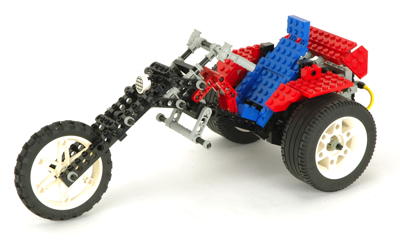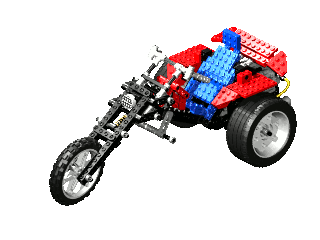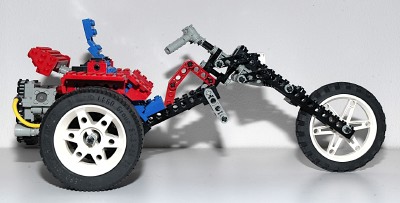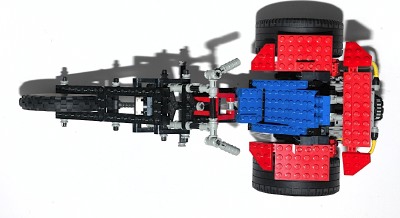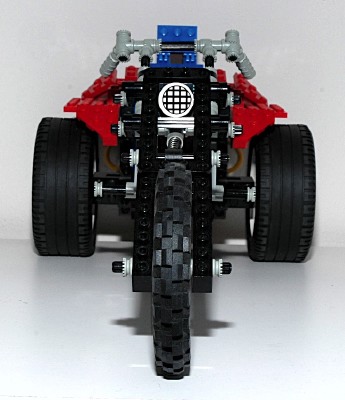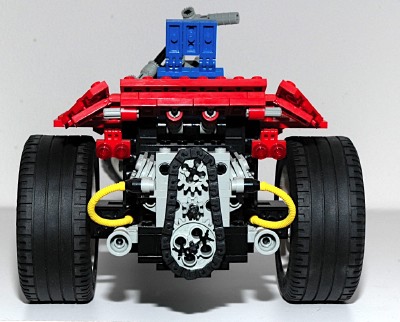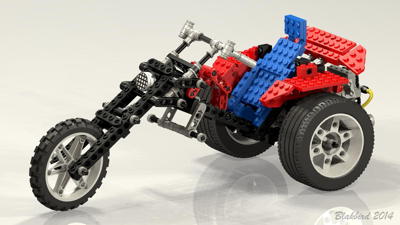Features
|
|
Steering
The front fork can be steered using the handle bars which are
constructed of toothed connectors and axles. The fork
pivots around an axle which passes through the head tube
part. A pair of triangle parts are used as triple trees.
The handlebar angle and is fixed using toothed
connectors. The fork rake angle is set by the head tube. As
you can see in the computer image, the rake angle is further increased
by placing the head tube at an angle using crankshaft elements.
Like a real chopper, the rake angle is very extreme which requires a
very large turning input to get a reasonable turning radius and results
in riding on the side of the tire.
|
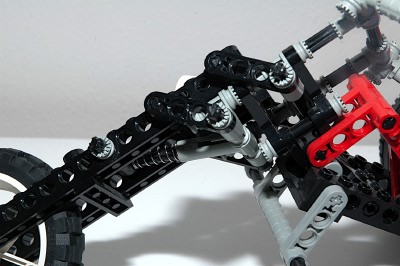
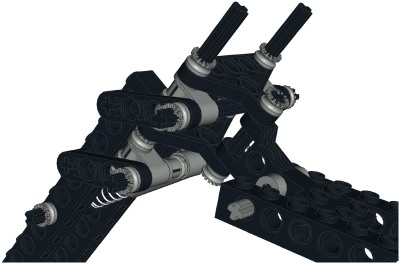
LDraw file courtesy of Benjamin Wendl.
Click for an animation of the
steering in motion.
|
|
Engine
The V-4 engine is made from cylindrical engine elements and is located
under the seat between the rear wheels. It is driven by the
differential. The 28 tooth ring gear drives a 14 tooth bevel
gear. Next a 24 tooth spur drives an 8 tooth pinion connected to
the crankshaft, resulting in a ratio of 6:1.
The crankshaft is
offset 1/2 stud from center, giving the pistons a stroke of 1 stud.
There is also a chain which runs between the 24 tooth gear at the
bottom and a 16 tooth gear on the top. This top axle does not do
anything but presumably represent a cam shaft.
|
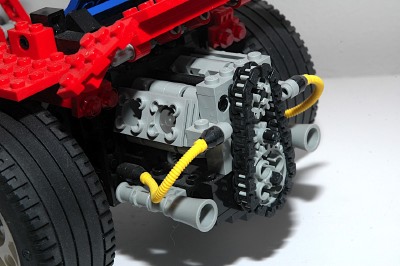

LDraw file courtesy of Benjamin Wendl.
Click for an animation of the
engine in motion. |
|
Differential
There is a differential gear between the two main wheels to allow for
easy turning on a powered axle. The diff
incorporates a built-in 28 tooth ring gear which can work either as a
bevel or a spur, similar to the 24 tooth crown gear. It is made
to house 3 of the 14 tooth bevel gears. One is on each axle,
and one planet gear in the middle allows the axles to turn at different
rates. |

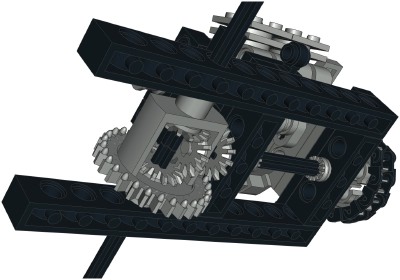
LDraw file courtesy of Benjamin Wendl.
Click for an animation of the
differential in motion.
|
|
Suspension
The front suspension is a girder type. Instead of having
compressible fork tubes, the forks are actually rigid. Instead a
4-bar linkage is formed between the forks, the triple trees, and some
1x4 side links. A spring at the bottom of this mechanism supports
the weight. As front brakes are applied, this type of suspension
will cause the wheelbase to shorten and the forks and headlight to move
upwards toward the handlebars.
|
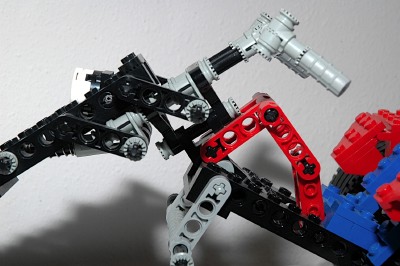 
LDraw file courtesy of Benjamin Wendl.
Click for an animation of the
front suspension in motion.
|
|
Wheels and Tires
The front wheel is the same motorcycle wheel which had been used in the
previous bikes 8838. It's large diameter
and narrow width make it an ideal front tire.
The rear wheels are enormous, wide, and flat. They are clearly
far too complex to have been designed for this motorcycle, a fact which
would be confirmed in 1994. Only two
models ever used these wheels. The center hole in the wheel is
actually round and does not have a cross slot, so it does not grip the
axle. If you look closely you can see that there is a bushing
inside the hub. Ever since its introduction in 1977, the bushing has had 4 flanges at one end
which allows it to be placed in-between studs on a plate. This
capability was rarely ever used. In this case, those same flanges
grib tabs on the wheel hub which locks the wheel to the main axle.
|
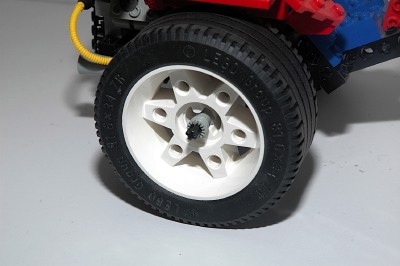
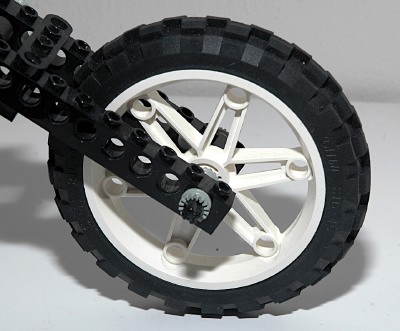 |

